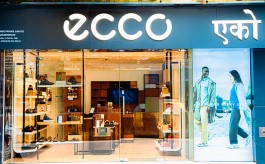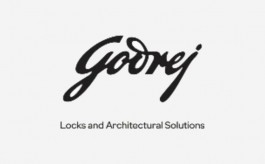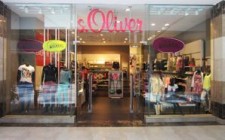Designer's take on floor covering in retail
By Dipanjan Mukherjee | Vjmedia Works | June 13, 2013
To understand the importance of flooring in retail space, VM&RD chatted up with some prominent retail designers and architects and got their take on flooring budgets, challenges and more
 Deciding on the type of flooring is a big call that the designer needs to take keeping in mind the different objectives of the flooring material for the format it serves. Key criteria that need to be considered are the budget, supply challenges and the design concept of the format. The type of format, its merchandise and the TG influence the importance given by the brand or retailer to investment on flooring. Supply challenges impact the feasibility of the recommendation and the design concept the importance to the detailing. Let's hear what the DESIGNERS and ARCHITECTS have to say on this ……….
Deciding on the type of flooring is a big call that the designer needs to take keeping in mind the different objectives of the flooring material for the format it serves. Key criteria that need to be considered are the budget, supply challenges and the design concept of the format. The type of format, its merchandise and the TG influence the importance given by the brand or retailer to investment on flooring. Supply challenges impact the feasibility of the recommendation and the design concept the importance to the detailing. Let's hear what the DESIGNERS and ARCHITECTS have to say on this ……….Budget
 "Budget allocation for flooring projects varies and is different especially in the case of longterm projects and ventures where design has to be changed at an interval of 2-3 years. At the same time if it is jewellery showroom then it is always very high-end lavish flooring which is the demand of the product. So budgeting is also dependent on that,†explains Bipratip Dhar, Architect at Epsilon.
"Budget allocation for flooring projects varies and is different especially in the case of longterm projects and ventures where design has to be changed at an interval of 2-3 years. At the same time if it is jewellery showroom then it is always very high-end lavish flooring which is the demand of the product. So budgeting is also dependent on that,†explains Bipratip Dhar, Architect at Epsilon. Anuja Gupta, Interior Decorator at Restore Solutions however avers, "The common perception people have towards flooring materials especially when it comes to retail spaces is that it is the most unseen and least important material and hence is budgeted always the lowest for a space. At times a few retail spaces do have pockets of especial floorings to enhance the merchandise or rarely as a design feature but the quantity is always very small and hence the price doesn't really affect the buyer at large.â€
Anuja Gupta, Interior Decorator at Restore Solutions however avers, "The common perception people have towards flooring materials especially when it comes to retail spaces is that it is the most unseen and least important material and hence is budgeted always the lowest for a space. At times a few retail spaces do have pockets of especial floorings to enhance the merchandise or rarely as a design feature but the quantity is always very small and hence the price doesn't really affect the buyer at large.†"From the client's perspective flooring is a very important aspect because it has to be really strong to bear the footfall as people are on it. For example, if a client is investing quite an amount on the visual merchandise and retail designing and wants that to stay for a long period of 10 years then the flooring has to be very sturdy. So the weightage given is very high.â€
 On the contrary Vinoo Chadha, Architect at The Design Cell shares, Holding the view 'Think long term' Alastair Kean, Group Director, Dalziel and Pow explains, "As flooring represents a huge proportion of any budget and is both disruptive and expensive to change we feel that its consideration as an architectural element makes the most sense. However, the choice of flooring needs to be seen in the longer term and needs to reflect the tough footfall demands over its lifecycle.â€
On the contrary Vinoo Chadha, Architect at The Design Cell shares, Holding the view 'Think long term' Alastair Kean, Group Director, Dalziel and Pow explains, "As flooring represents a huge proportion of any budget and is both disruptive and expensive to change we feel that its consideration as an architectural element makes the most sense. However, the choice of flooring needs to be seen in the longer term and needs to reflect the tough footfall demands over its lifecycle.†Likewise Devyani Jaiswal, Architect & Interior Designer at D J Associates says, "In comparison to residential space the cost weight-age for retail floor covering is less here in India from the client's perspective. If the budget of the housing project is Rs 500 then may be it is Rs 100 for retail.â€
Sanjay Agarwal, Director at FRDC however feels, "A maximum 10 percent goes towards the flooring aspect only in case of a premium environment.â€
Challenges
Well when it comes to challenges, most from the design fraternity are quick to articulate the grouses. Here's what each one of them had to say about it:
"Flooring tiles available in the Indian market right now usually lack in uniformity, consistency in quality, color, finishes and most importantly the availability. The imported tile materials are definitely better in finish, but the cost at which they are available in the market and the lead time the material takes to get to site always makes the end users resistant to them.†- Anuja Gupta, Interior Decorator at Restore Solutions.
 "Here the biggest challenge we face is workmanship. Though the number of options and varieties have increased, we find workers are not trained by the companies. So, everything is managed by one trained person and it makes us cautious about specifying expensive floor as there is no quality guarantee. Secondly, dealer networking also acts as `a stumbling block because it's tough to keep up to time, money and breakage along with many other issues.†- Sanjay Agarwal, Director, FRDC
"Here the biggest challenge we face is workmanship. Though the number of options and varieties have increased, we find workers are not trained by the companies. So, everything is managed by one trained person and it makes us cautious about specifying expensive floor as there is no quality guarantee. Secondly, dealer networking also acts as `a stumbling block because it's tough to keep up to time, money and breakage along with many other issues.†- Sanjay Agarwal, Director, FRDC  "In the Indian context, we need to choose floor material depending on the maintenance factor as our tendency is to keep it for more than what it is supposed to be, so naturally it fades or get spoilt with the usage.†- Nagaraja R, Director-Design, Four Dimensions (4D)
"In the Indian context, we need to choose floor material depending on the maintenance factor as our tendency is to keep it for more than what it is supposed to be, so naturally it fades or get spoilt with the usage.†- Nagaraja R, Director-Design, Four Dimensions (4D)"In India, it depends on the kind of business. Weather condition is also a major factor. Besides, there are factors like whether the showroom will have high-traffic or moderate one or is it for a much chosen clientele. For example, we have done the furnishing showroom for Times Furnishing in Park Street, Kolkata having a very elegant white flooring though they have a very high footfall, because again after 2-3 years there will be a revamping of the store décor.†-Bipratip Dhar, Architect - Epsilon.
"The biggest issue is the maintenance of the floor. The increasing rate of pollution, dust, mud makes it difficult to preserve very high-end floors, thus for most of the cases the vitrified tiles or natural stones should be used which are hardy.†- Devyani Jaiswal, Architect & Interior Designer, D J Associates
 "Because of the condition of work sites during construction, your choice of materials need to be considered not only in terms of how the material will stand up during retail usage, but also in terms of whether the material has the ability to "survive†the construction process. This impacts everything from choices of grout material and colors, to the durability of the material to hold up, stand up against ladders, construction equipment, etc. In most parts of the world, the floor is either the last thing that goes down in a store and/or is protected during the construction process, which is not something that is standard during Indian construction. Environmental factors are particularly challenging as well, not only from the durability of the material, but also the ability of the material to look good during the store's daily lifecycle.†- Ken Nisch, Chairman - JGA.
"Because of the condition of work sites during construction, your choice of materials need to be considered not only in terms of how the material will stand up during retail usage, but also in terms of whether the material has the ability to "survive†the construction process. This impacts everything from choices of grout material and colors, to the durability of the material to hold up, stand up against ladders, construction equipment, etc. In most parts of the world, the floor is either the last thing that goes down in a store and/or is protected during the construction process, which is not something that is standard during Indian construction. Environmental factors are particularly challenging as well, not only from the durability of the material, but also the ability of the material to look good during the store's daily lifecycle.†- Ken Nisch, Chairman - JGA. Store Design Concept
Finally, is flooring an extension of the whole VM package of a store? Well, here's what they had to say:
"It is always an extension of the Store Design and VM Theme because the visual merchandise tells you a tale and thus naturally flooring is a part of it. For example, we did a showroom for Shreeji Jewellers or Varima Fashions, where the flooring has a very traditional touch with inlay and a design element in the middle as focus with the false ceiling giving an ethnic look. In comparison to that, the uniform flooring for Indera Motors portrays a huge look and a modern trend as well. Thus it establishes the fact that the theme dominates the design elements.†- Bipratip Dhar, Architect - Epsilon
 "Flooring is always an extension of the Store Design and VM theme. Depending on the product, it may have a rustic look, a smooth feel, a shiny look and so on. For example, for the restaurant Oval in Kolkata, we have used various elements on the floor like strips of pebbles running by side for demarcating the lounge-bar area from the rest of the dining space where the flooring has got a rustic feel. For a saree showrooms if the space is wide then one may play with many designing elements having an ethnic touch into it.†- Devyani Jaiswal, Architect & Interior Designer, D J Associates
"Flooring is always an extension of the Store Design and VM theme. Depending on the product, it may have a rustic look, a smooth feel, a shiny look and so on. For example, for the restaurant Oval in Kolkata, we have used various elements on the floor like strips of pebbles running by side for demarcating the lounge-bar area from the rest of the dining space where the flooring has got a rustic feel. For a saree showrooms if the space is wide then one may play with many designing elements having an ethnic touch into it.†- Devyani Jaiswal, Architect & Interior Designer, D J AssociatesThese testimonies validate the fact that multidimensional issues need to be addressed when taking the call on the type of flooring that a brand or retailer needs to invest in. A good call is a prudent mix of good value for money, feasibility of the recommendation and appropriateness for the store design concept.
This would not just make good business sense but also help deliver the intended brand experience in the store environment.
Advertisement








